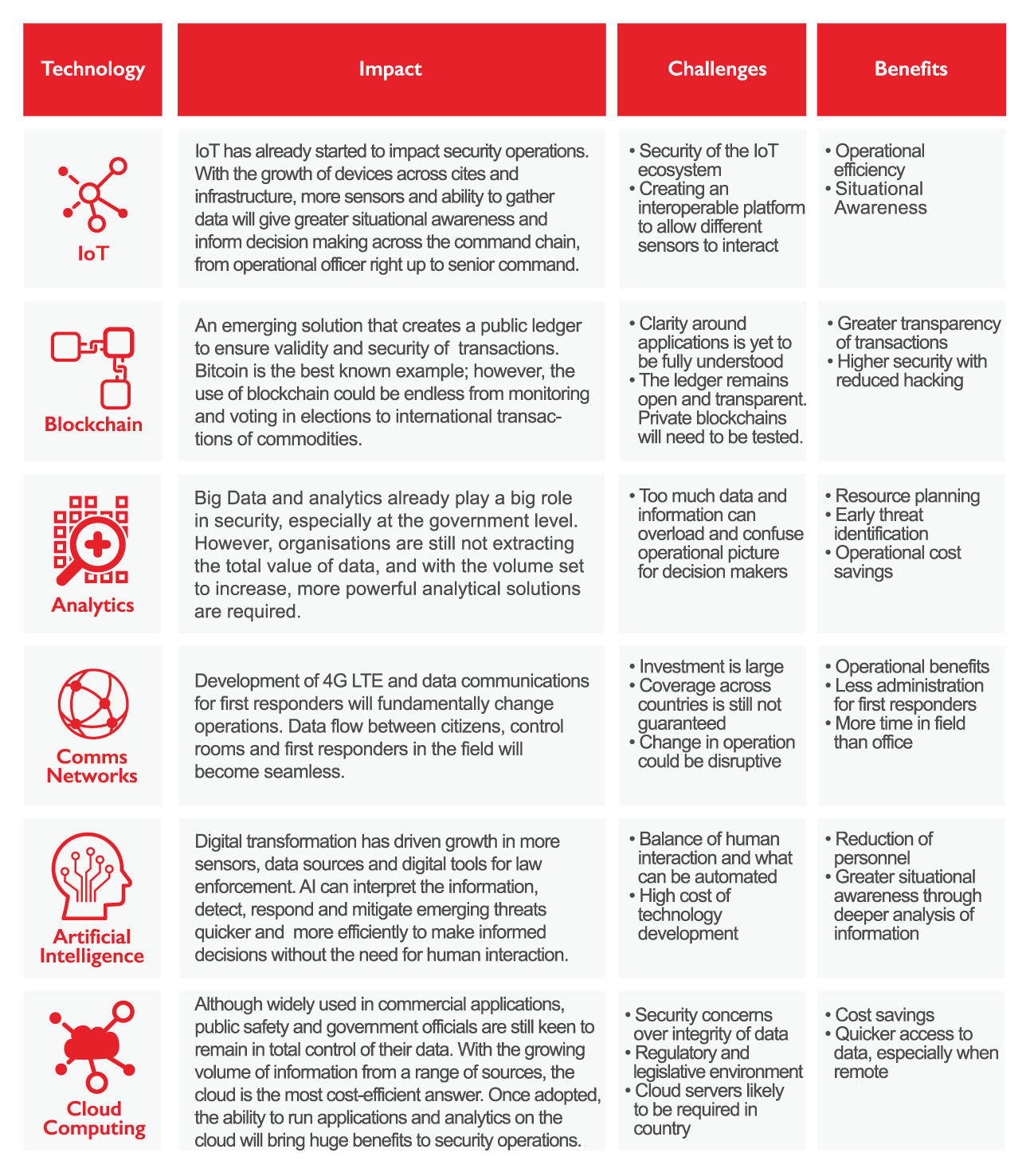Digitization and Transformation
of Public Safety
"The future of public safety will be defined by how these four factors interact and evolve."
The future of public safety will be defined by how these four factors interact and evolve. However, it is clear that governments will continue to invest in security solutions across all levels of society. The key to this is investing in the right technologies that not only provide operational benefits but are also able to deal with issues in the future. All governments are facing a number of challenges, and in many cases the only viable answer to improve public safety is to invest in technologies to help achieve these core objectives, whilst filling capability gaps and providing clear public benefits.
Safe City – Technology Drivers
Whilst traditional security technologies will be the backbone of security solutions, emerging technologies leveraging IoT solutions will have a disruptive effect.
Evolving networks and data-driven services, data and video analytics, biometrics, cloud computing and blockchain technologies are changing the traditional methods of security, operations and protection. The fundamental driver of this is the exponential growth of data and information fuelled by endpoints and connected devices, and information gathered and stored in national police databases. This will continue in the future to give security operators greater tools to predict and prevent threats in real time, and make more intelligent and real-time decisions to drive more positive and safe outcomes.
Key Technologies and Their Impact on Public Safety

By 2025 data will be one of the cornerstones of security. All of the technologies above are related to collecting, analysing, storing or moving that information. These will all help to simplify the process of getting the right information at the right time to the appropriate person to make an informed decision.